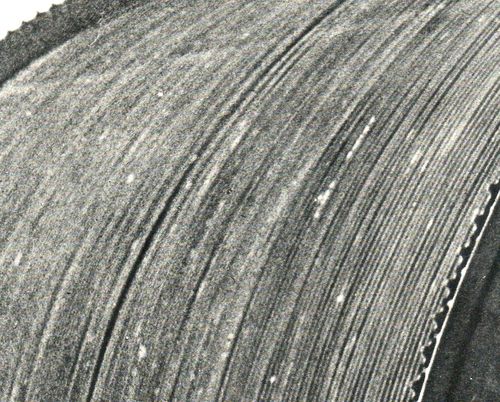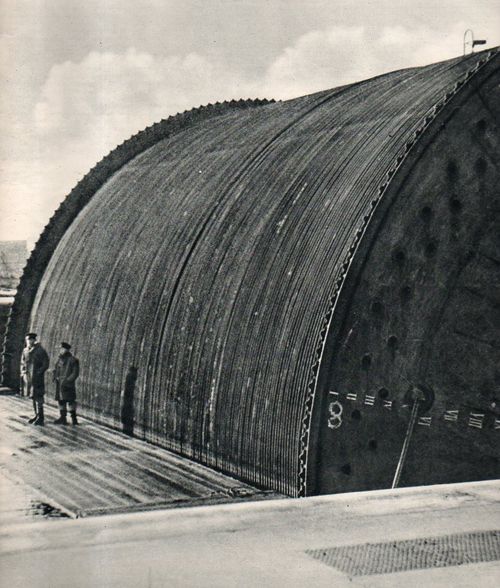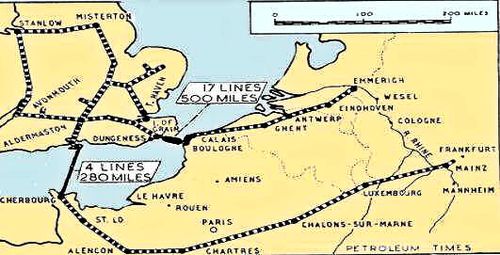JF Ptak Science Books Post 2206 History of Lines series
The path of existence of the non-planet planet Pluto along with the rest of its Solar System friends can be nicely plotted out for visual ease on a series of mostly-concentric orbital lines. Pluto's line is the longest, taking about 248 years to complete its orbit traveling at about 10,600 mph, which means that in a year's 8760 hours that it moves very close to the equivalent along its path as the Earth's distance from the Sun, which is an odd bit of trivial. In any event, it is a long line.
There was another line/Pluto point of interest that takes us much closer to home, and much more near in time and space. Project PLUTO (Pipe Line Under The Ocean) was a vast, integral, and magnificent engineering undertaken by the British government to surrepticiously and safely deliver petroleum to the Allied forces in Europe during WWII. It reached through England and across the Channel in two places (code-named Bambi and Dumbo), via pipelines laid under the sea, and supplied armies in France, Belgium, Luxembourg, Holland, and Germany (as far as Mainz).
[This is a detail of one of the vast bobbins that were hauled across the sea, unspooling many hundreds of miles of pipe in several lines.] This is what it looked liek apart from a detail image:
Of course getting fuel to your troops in advanced positions is a major undertaking--not being able to do so would kill an army (just such a thing arguably happened with the Afrika Corps). Fuel could of course be trucked in in drums, and sent across the water in ships--but that doesn't come close to the fantastic efficacy of having a pipeline. And this is just what Pluto was--an extraordinary idea made real, with enormous positive consequences.
Map source, here
And the 1945 Newsreel:





Very nice. By coincidence I was in Shanklin, one of the terminus points, only a month or so back: actually one of my favourite places. A hotel on the seafront, the Royal Spa, was bombed - see Shanklin Spa http://jsbookreader.blogspot.co.uk/2014/03/shanklin-spa.html - and they used the shell to hide the pumping station for the pipe at the nearby scenic ravine, Shanklin Chine.
Posted by: Ray Girvan | 25 April 2014 at 09:34 PM